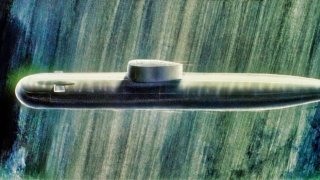Russia's Losharik Spy Submarine Is Making the Ultimate Comeback
The Russian Project 210, also known as the Losharik submarine, is preparing for a significant comeback after being sidelined due to a fatal fire in 2019 that claimed 14 lives.
Summary: The Russian Project 210, also known as the Losharik submarine, is preparing for a significant comeback after being sidelined due to a fatal fire in 2019 that claimed 14 lives. This secretive, nuclear-powered deep-diving sub, rumored for spy missions and capable of extreme depths with its titanium sphere-constructed hull, has been under repair at Severodvinsk's Zvyozdochka shipyard. With its nuclear elements unscathed, and repairs nearing completion, the Losharik is set to resume testing soon. Its unique design and speculated capabilities, including potential undersea cable interference, underscore its critical role in Russia's naval strategy and the cloak of mystery that surrounds it.
Russia's Enigmatic Losharik Submarine Set for Dramatic Return After 2019 Tragedy
The Russian Project 210 nuclear-powered deep-diving submarine has been out of service since 2019. In July of that year a fire broke out in the battery compartment of the submarine, killing 14 sailors, including the boat's captain. The submarine, nicknamed Losharik and also known as the AS-31, was reportedly conducting underwater research activities in the Barents Sea when the incident occurred. The fire seriously damaged the boat's radio, electronic sensors, automatic systems, acoustic and navigation equipment, and life-support systems.
Though the submarine is reported to be nuclear-powered, the "nuclear elements" were isolated from the fire.
It was the worst loss of life on a Russian submarine since 2008's K-152 Nerpa accident resulted in the death of 20 men – but the AS-31 was able to return to port. Since then, the submarine, much about which remains secret, has been undergoing repairs at the Zvyozdochka ship repair center in Severodvinsk. According to Russian state media reports, those repairs are nearly complete, and the submarine will begin tests in June or July.
Secret Sub – What Do We Know
The Losharik was laid down in 1988, but Russia’s depleted finances kept it from sailing until 2003. It remains one of the most secret submarines in the Russian fleet.
As previously reported by Harrison Kass, the AS-31 is generally categorized as a spy sub – and Moscow has disclosed little about it, leaving Westerners to speculate on its capabilities. Its hull is believed to be formed from seven connected titanium spheres, which greatly increase its structural strength. Such strength is necessary as the submarine has been tested to depths of 6,600 to 8,200 feet in the Arctic Ocean.
It is far from a large boat – at 70 meters long it displaces just 2,100 tons when submerged. It is small enough that it was normally carried by the Podmoskovie, a rebuilt Russian Delta-IV submarine. The Losharik is reported to have a single nuclear reactor. Officially designated for research, rescue, and special military operations, the exact mission of the submarine is unclear, but it is believed the AS-31 could be used to tap into or sever undersea telecommunications cables.
Its name isn't officially Losharik. The nickname comes from a Soviet animated film whose titular character is a toy horse built from small spheres. The NATO reporting name for the boat is "NORSUB-5."
The 2019 fire onboard the Losharik was not the only mishap involving Russia's top-secret submarine. According to noted naval analyst and author H.I. Sutton, the Losharik's manipulator arms were damaged while on a mission under the Polar Icecap.
Author Experience and Expertise: Peter Suciu
Peter Suciu is a Michigan-based writer. He has contributed to more than four dozen magazines, newspapers, and websites with over 3,200 published pieces over a twenty-year career in journalism. He regularly writes about military hardware, firearms history, cybersecurity, politics, and international affairs. Peter is also a Contributing Writer for Forbes and Clearance Jobs. You can follow him on Twitter: @PeterSuciu. You can email the author: [email protected].


